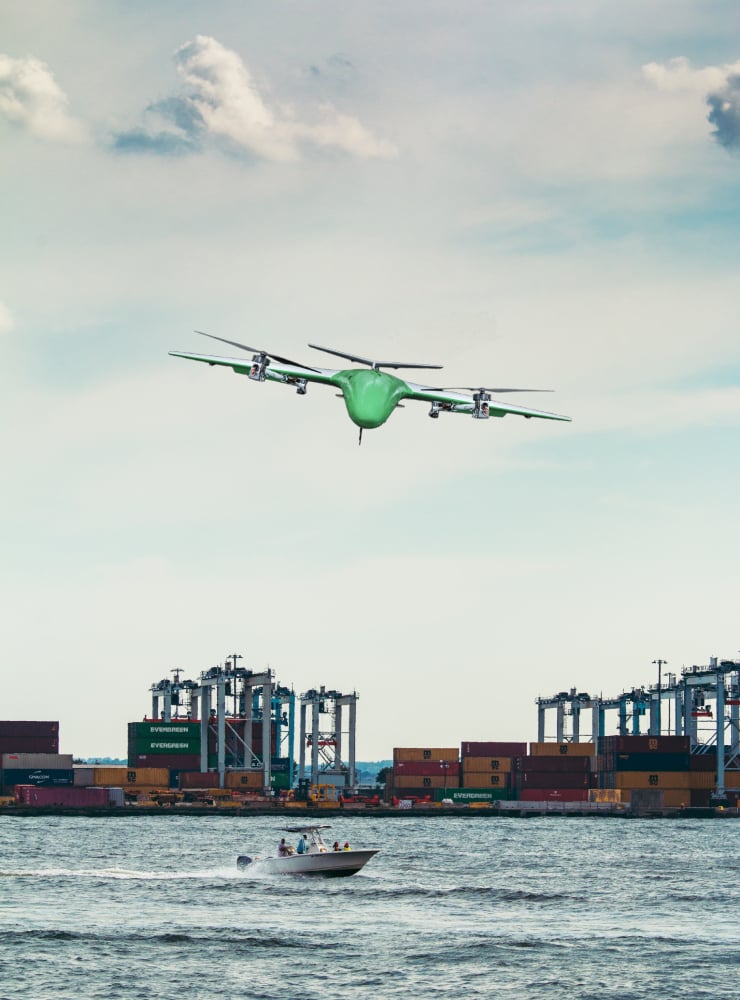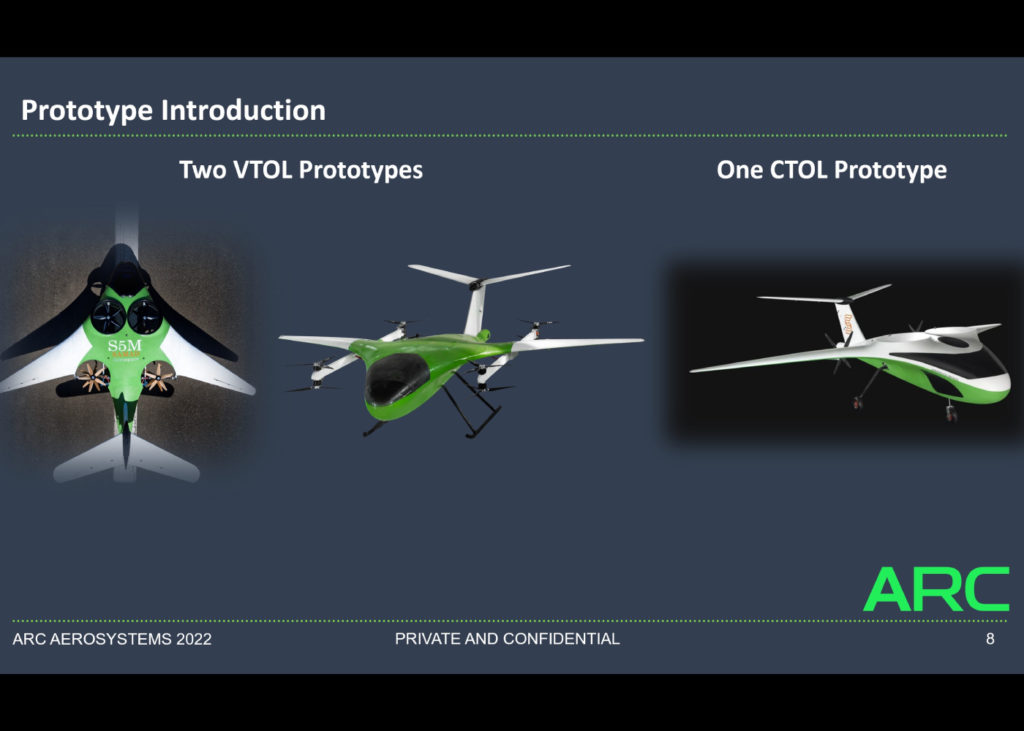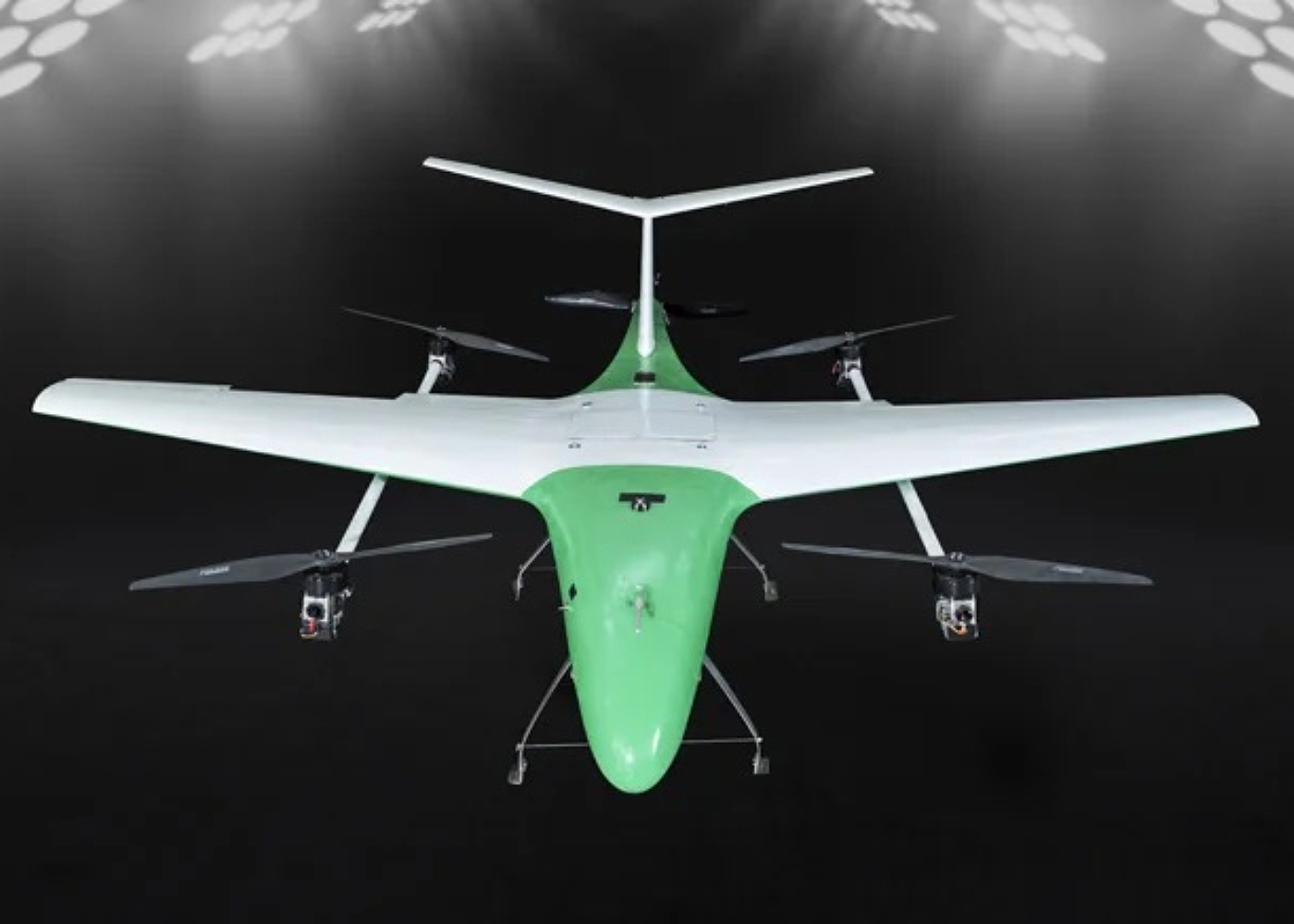Based in the U.K., ARC Aerosystems, formerly Samad Aerospace, has achieved steady progress with its eVTOL concepts, including completing its latest proof of concept full transition tests for its C150 cargo drone design.
Vertical reached out to Seyed Mohseni, CEO at ARC Aerosystems, to get an overview of the company’s developments. Mohseni provided insight into ARC Aerosystems’ plan to devise a practical strategic path to certify an intercity capable regional aircraft.
This interview has been edited for length and clarity.

Alex Scerri: Seyed, can you give us a short recap of your background? What was your inspiration for entering the eVTOL space?
Seyed Mohseni: I see myself as a businessperson first and an aerospace engineer next. I entered business at a very young age. My parents always encouraged me to be solution oriented and I get personal satisfaction whenever I provide a solution that solves a problem.
Initially, I wanted to be a pilot but then I found I was more interested in the aircraft and its design. When I was 17, I remember writing my 25-year plan in a notebook and at the end of that, I wanted to have a factory to build aircraft. That was about 22 years ago, so things are going in the right direction.
I set up a few businesses, which did very well, but I realized I needed to study aerospace engineering if I wanted to be successful in that field. I started at Kingston University and continued at Cranfield University. I specialized in aerospace propulsion and set up Samad Power, where we developed one of the smallest gas turbine engines for power generation applications. Samad Power is now producing small turbogenerators for the aerospace industry as well. They have a separate team and now I am a non-executive chairman there.
I followed that by setting up ARC Aerosystems, formerly Samad Aerospace. ARC stands for Advanced Regional Connectivity, as it is more focused on regional connectivity rather than urban air taxi missions. We went through about seven different generations of aircraft. We built various designs, tested them, failed with some and were successful with others. Since last year, we have concluded where we want to go with product development.
Alex Scerri: You seem to have two distinct lines of development — the ARC C-150 cargo drone and the e-Starling. Can you give us the stage of development for both?
Seyed Mohseni: In fact, these come from the same development process. The e-Starling was intended as a passenger aircraft. We designed and built scale prototypes of that aircraft, and soon after the first tests, we realized that for an efficient multirotor aircraft, we needed better disk loading.
The disk loading on the e-Starling was about 500 kilograms per square meter. The higher the disk loading, the more power you require and sometimes control could also be a problem. In one of the bigger prototypes that we built, we used a ducted fan, but the power consumption was very high. We decided that for the e-Starling concept, we would need to bring the rotors out of the fuselage and will soon share a video of another half-scale prototype with this new design that has already gone through full transition.
During the design process, we built a quarter-scale model, and the C-150 is a spin-off from that. Initially, it was just a test platform, but we saw that this could be utilized as a 150-kilogram (330-pound) cargo delivery unmanned aerial vehicle (UAV). Soon, we will be showing the C-600, which is a 600 kg (1,323 lb) UAV and in turn, is also a spin-off of the half-scale prototype of the e-Starling and can carry about a 150-kg (330-lb) payload.

Alex Scerri: What power source are you using for the C-150?
Seyed Mohseni: There will be two versions. A fully electric version that will have about a 100-kilometer (62-mile) range with some reserves, and a hybrid-electric version that will fly up to 400 km (249 mi).
Alex Scerri: You mention the hybrid powertrain. Will you be using the thermal engines from Samad Power?
Seyed Mohseni: It’s an option but we are not limited to that as they are separate companies. Samad Power is developing a turbogenerator and has already built a 15-kilowatt prototype that has run on hydrogen, sustainable aviation fuel (SAF) and conventional fuel as well.
Alex Scerri: What is your outlook for hydrogen as a fuel?
Seyed Mohseni: Samad Power has already used it to run a turbogenerator, so it has demonstrated the capability. It is important to recognize that this type of operation relies on hydrogen refueling infrastructure. So, although hydrogen is good for longer missions, it is important to keep the electric mode for shorter ranges whenever possible and maintain the SAF option as a pragmatic step until hydrogen is more widely available.
Alex Scerri: Can you share an overview of your flight test activities up to now?
Seyed Mohseni: We have done about 50 flights with the C-150 prototype, including full transition. For the C-600, we have done five flights so far and it has just achieved its full transition test. This is going to continue and hopefully by March 2023, we will be holding a live demonstration with invited guests. We are planning to do this in Scotland as part of a program supported by Innovate U.K. through the Future Flight Challenge.
Alex Scerri: What certification pathways are you planning for the C-150 and C-600?
Seyed Mohseni: For the moment, these are technology demonstrators. In the future as we plan to turn these into products, then we must think about the certification of these aircraft. The C-150 will qualify under [the U.K.’s] CAP 722, which mainly relates to certifying the operation.
For the C-600 UAV cargo version, this will come under light sport aircraft [LSA] certification, which would be up to 600 kg (1,323 lb) MTOW [maximum take-off weight]. Then we would have to certify the command and control [C2] and avionics system separately for the actual beyond visual line of sight [BVLOS] operation.
Alex Scerri: What about the passenger versions?
Seyed Mohseni: Last year, we did an extensive study to finalize a strategy for our product development. We hired a group of six professionals from the industry with a focus on certification expertise. The conclusion was that if we want to have any configuration of a passenger aircraft with multiple rotors, we will have to certify it under the European Union Aviation Safety Agency’s [EASA] SC-VTOL and the Federal Aviation Administration’s [FAA] recently announced powered-lift certification pathway.
Although there are differences, in both cases you essentially have to demonstrate the same safety standards as in large commercial aircraft — an acceptable rate of less than one catastrophic failure per 10-9 flight hours. That requires an investment of around $2 billion compared to about $200 million needed to certify a general aviation aircraft.
We looked at the level of investment, and it would not make sense because we would end up with an aircraft with four seats with the development cost of a commercial airliner. It would take decades to recover the investment.

I appreciate that some of the front runners have gone forward and are trying to raise further funding. However, as they raise further funding, the value of the companies is going down through share dilution and that is not good news for the industry. Of course, I hope that they secure the investment they require, otherwise, these projects will not be in a good place.
Our plan is to come up with a solution that would qualify as a general aviation type aircraft, because we do not want an air taxi flying over densely populated areas. We want to focus on intercity travel and connecting rural areas that are underserved by the current transportation infrastructure.
Therefore, we must come up with the configuration that would not be classed as EASA’s SC-VTOL or the FAA’s powered-lift version. We have been looking at what lessons we could learn from the past and come up with a design concept. We should be making an announcement on this sometime close to the new year or maybe early next year, depending on some developments.
It will be an aircraft that can carry nine passengers and will qualify under 14 CFR Part 27/23 – CS 27/23, so the certification requirements would be significantly less complex. It will always be a challenge, but we believe it’s a more realistic certification path that we can secure so we don’t have to make unviable promises.
Alex Scerri: Do you have any other message to share with the eVTOL community?
Seyed Mohseni: I think it is important that we are ambitious and have the willpower to contribute to advancing aviation, but at the same time, we must be careful not to mislead people unintentionally.
Entrepreneurs can get very excited about the plan, and they can make some claims that investors and the public might perceive as something that will certainly come to fruition. While being hopeful of what we can achieve, we must not forget that the aerospace industry is different from other industries, as it is very tightly regulated. A lot of people who have come to this industry are from the automotive or energy industries and don’t always appreciate the hurdles of certification and the operational challenges.
The other message I have is to pay attention to operations, because this is where the majority of the AAM contenders are ignoring in terms of cost, safety, and practicality. In our case, we hired three professionals with operational experience in various regional airlines to join us, specifically to teach us the things that we don’t know about operations. I believe all design teams should have this type of feedback in their mix.









